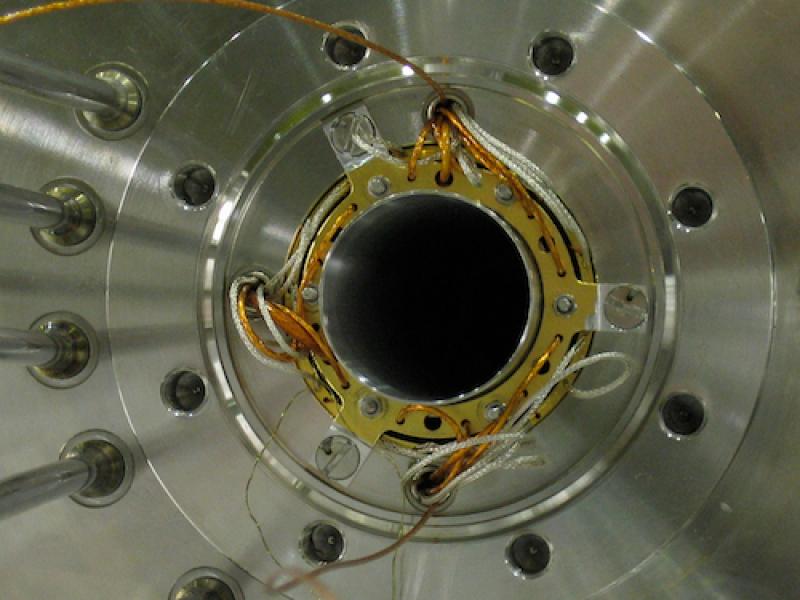Canadian-led study akin to antimatter forensics
August 1, 2017

August 1, 2017

A Canadian-led investigation has opened a new chapter in antimatter research. In a study published today in Nature, the ALPHA Collaboration, which includes 50 physicists from 17 institutions including UBC, reports the first detailed observation of spectral lines from an antimatter atom.
"Spectral lines are like fingerprints," says lead author Michael Hayden, a Simon Fraser University physics professor. “Every element has its own unique pattern.”
There is one (possible) exception: matter and antimatter are believed to be mirror images of one another, and so the spectral lines of antimatter atoms should be precisely the same as those of their normal atom counterparts. Whether or not this is true is unknown. Until now, scientists have only had glimpses of antimatter spectral lines, and comparisons with normal matter spectral lines have been coarse.
The ALPHA Collaboration studies antihydrogen, the antimatter counterpart of the ordinary hydrogen atom. Their experimental results show a particular set of spectral lines in antihydrogen match those in hydrogen very well. The team plans to zoom in much closer to check if subtle discrepancies exist between the two atoms on a yet finer scale.
Conducted at the CERN laboratory in Geneva, the research involves irradiating antihydrogen atoms with microwaves, similar to those used to communicate with satellites. When this is done, the anti-atoms reveal their identity by emitting or absorbing energy at very specific frequencies. That pattern, or spectrum, of frequencies corresponds to the “fingerprint” described by Hayden.
“One of the challenges we face is that matter and antimatter annihilate when they come into contact with one another,” says Justine Munich, an SFU physics PhD candidate. “We have to keep them apart. We can’t just put our anti-atoms into an ordinary container. They have to be trapped or held inside a special magnetic bottle.”
“By studying the properties of anti-atoms we hope to learn more about the universe in which we live,” says Hayden. “We can make antimatter in the lab, but it doesn’t seem to exist naturally except in miniscule quantities. Why is this? We simply don’t know. But perhaps antihydrogen can give us some clues.”
About the ALPHA Collaboration:
ALPHA is a collaboration of about 50 physicists from 17 institutions in Canada, Brazil, Denmark, Israel, Japan, Sweden, the United Kingdom and the USA. ALPHA-Canada comprises about 40 per cent of the ALPHA Collaboration. It currently consists of ten senior scientists, four postdoctoral researchers and five graduate students from five Canadian institutions. Twenty-three out of 54 co-authors in the reported work are presently or formerly with ALPHA-Canada: Michael Hayden, Justine Munich (Simon Fraser University), Nathan Evetts, Andrea Gutierrez, Walter Hardy, Taka Momose (University of British Columbia), Andrew Evans, Tim Friesen, Chukman So, Robert Thompson (University of Calgary), Melissa Mathers, James Thompson, Scott Menary (York University), Andrea Capra, Robert Collister, Joseph McKenna, Mario Michan, Makoto Fujiwara, David Gill, Leonid Kurchaninov, Konstantin Olchanski, Art Olin, Simone Stracka (TRIUMF).
We honour xwməθkwəy̓ əm (Musqueam) on whose ancestral, unceded territory UBC Vancouver is situated. UBC Science is committed to building meaningful relationships with Indigenous peoples so we can advance Reconciliation and ensure traditional ways of knowing enrich our teaching and research.
Learn more: Musqueam First Nation